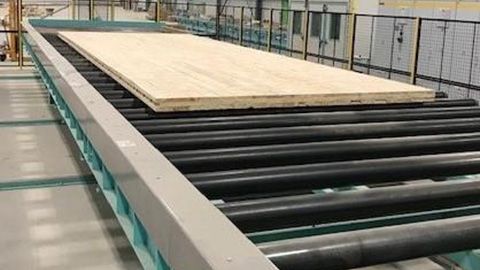Can-Eng Furnace required a 4-part Conveyor
About the Company:
Can-Eng Furnaces International Ltd. was established in 1964 and is located in the Niagara Peninsula of Ontario. They are considered the leading global designer and manufacturer of thermal processing equipment for ferrous and non-ferrous metals. Their furnace systems provide the latest advancements in energy saving technology, material handling and automation, incorporating new technology to replace conventional designs and improve production flow, and facility efficiencies.
The Needs:
Can-Eng required a 4-part conveyor system that consisted of:
- An Infeed Conveyor
- A One-Cell Transfer (Rotary) Conveyor
- Two Outfeed Conveyors
- A Reject Conveyor
The Infeed Conveyor system would be manually hand-loaded by an operator that would load individual engine combustion heads onto the lead-ins. They conveyor would then act as a shuttle, moving one part at a time from the load, to the pickup position.
For the System Transfer Conveyor, a robot would place a bundle of parts onto the rotary table between cells. After the parts were dropped, the table would need to index 180 degrees to leave the parts in the same orientation for another robot to pick up. The conveyor would then transfer the heads from one cell to another.
The Outfeed Conveyor would receive parts from an outfeed robot one at a time on an elevated pop-up. Once the parts were on the pop-up, it would lower onto a slat conveyor and move out of the cell to an end stop, where the operator would manually remove the parts.
The last component of the system would be the Gravity Rejector Conveyor. Any parts that were rejected by the system would be placed on the reject conveyor one at a time. The parts would then ascend down to a manual stop, where the operator would have a lift handle to allow one part at a time to move to the unload position.
The Challenge:
The challenge for Almac was that we needed to ensure that all combustion engine heads were loaded accurately, in order to be picked up by the furnace tending robots. These robotic arms were programmed to pick up the heads in specific positions and the conveyor system we created, had to allow for this clearance, and the specific positioning.
Solution:
In order to create a system that would work in conjunction with the robotic arms, Almac pulled ideas from a previously completed conveyor system. This helped to establish aa understanding and basis for the clearance required for the robotic arms, when engineering this specific system.
When looking at the specific positioning factor of the system, Almac had a point of innovation with the use of an indexing unit on the turn-table. This was the first time Almac had used the indexing unit in this capacity, but it allowed for precision movement, stopping within millimetres of the required position for the robotic arms, after a 180-degree turn.
Result:
Overall, Can-Eng was extremely pleased with the system built by Almac. Once installed, there were no issues with the system.



